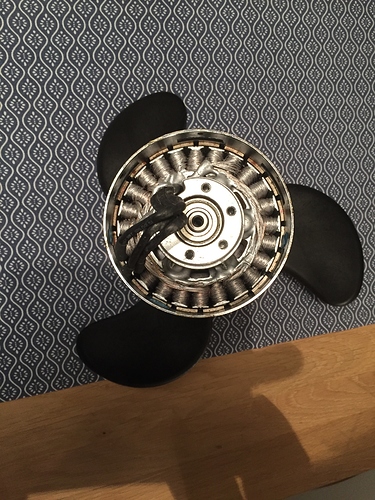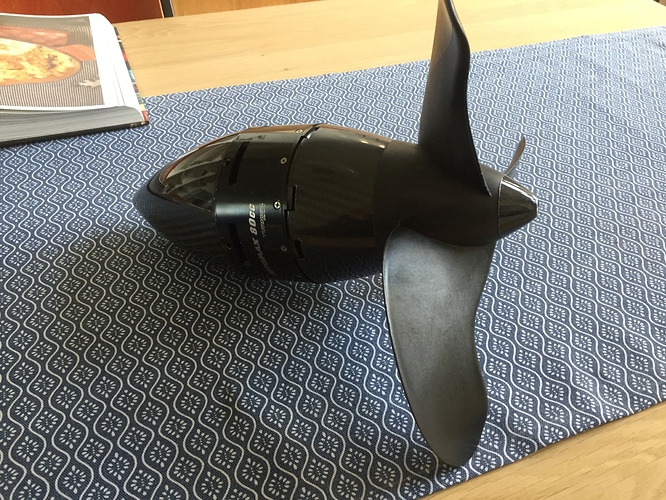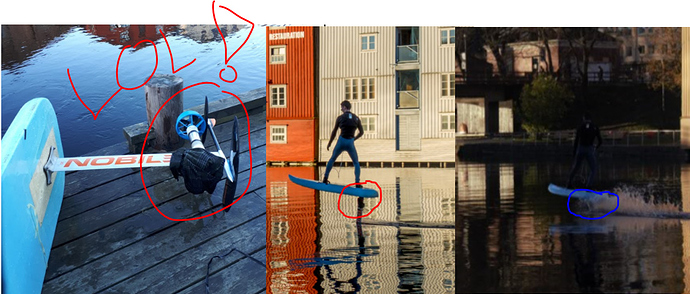Just yesterday I accidentally saw a model of a similar pump, someone can print it.
Inversed aquarium air pump works good for lamination.
How many people, so many opinions, I know many people who say that even a compressor from a refrigerator or a converted car compressor is not suitable, because it does not create enough vacuum to remove air from the resin. And in this topic, we are talking about the insulation of the windings of the engine, for which it is necessary to create sufficient vacuum so that the resin pushes out all the air from the windings.
It is very simple: Any vacuum starting from 100mBar will work. Why? Because you can repeat the process several times. Assume there is a cavity filled with air. By applying 100mBar 10 minutes and afterwards 1000mBar 10 minutes you get 9/10 of the air out. The next time its 99/100, 999/1000, 9999/10000 and so on. So the quality of vacuum only determines the number of repeats. I read that a fridge compressor does 60mBar, which is approx. 1/16 of normal pressure. The remaining air would be 1/16, 1/256, 1/4096, 1/65536. In the fourth repeat you see no air is coming out anymore and you can stop. If you have a vacuum of 2mBar, you should see no air coming out at the second round. But i wonder how long it takes to reach this low value, maybe it will take longer than repeating the process.
Make sure you use a cast resin which is thin, has low viscosity and has a pot time > 4 hours.
Take the stator out of resin after pot time, when it is geling. Let it drip off. Turn it upside down if you think the film gets too thin. Check and clean the bearing seats.
Rest it for 3-12h. Warm it to 70-100°C to cure it 12-3 hours. Cool slowly, warm slowly.
I do not quite understand what you mean by the repetition of the process, any compressor has the ultimate pressure value that it can pump or pump out, this is due to many factors, first of all it is the quality of sealing the moving parts and valves, no matter how long you hold the compressor is on, more than that the seals in the pistons are missing and in the valves it can not pump out. Another thing, if the output of the compressor itself does not go into the atmosphere, but into a discharged environment, this is how the multi-circuit systems are constructed, the output of one compressor is connected to the input of the other, so you can achieve greater depletion.
I found a video where degassing goes at a pressure of more than 100mbar, I thought that you need a stronger vacuum
This gassing is enourmuous, i never experienced it this way. Anyhow we want to do something slightly different. We do have cavities to be filled with resin. By applying 1/10 of normal pressure and normal pressure several times, we can work the resin into the cavities, so the residuing amount of air becomes very very small. By every repeat we remove 90% of the residual air, so after 4 repetitions you end up with 9999/10000 of resin and 1/10000 of residual air in theory. In practice the residual air is much more, this is caused by the limited time we have to overcome the viscosity of the resin. But it does not play a big role, because all inflows to cavities are filled with resin - so no water can flow into it.
So as soon as you cannot see any air coming out of the stator iron while applying under pressure you can stop the process.
What do you think about this motor for direct drive.
It s said waterproof and oxydation traitement on all parts.
http://www.maytech.cn/en/mto6374-170-ha/10339.html
Hmm, from their website:
Keep motors away from moisture, dust, scrap and small items to avoid damages.
Probably as good as any motor
I noticed a big difference between 6374 and 6384, because the stator and rotor active length is increased by 10mm.
In an alien 6374S sensored the stator is 53x40mm, 6384S is 53x50mm (+20%) and the 6384PowerGlider will have 53x55mm (another +10% torque, current capability and power instead of sensors).
The other thing is the kv or RPM/V. With 170kv and 12s you get 7000RPM, so the prop must be really small. With 100kv or less you get a much better combination.
Generally all aluminium surfaces are anodized on all motors i have seen, so nothing special.
Water proof means you can use it in the rain or mist. Nothing is said about salt on street or salt water.
The closed design is nice, on the other hand i would drill some holes into the rotor and hub to have a waterflow. Otherwise the water can get cooking hot and destroy the magnets which are mostly rated for 80°C only.
I am waiting for alien to deliver but it always gets later than promised.
In the meanwhile we could make some design approaches here for the duct, its mounting and alternatives.
I have 2 of those 170kv maytech sensord at motors at 12s on my mountain board, they work well but get quite hot. Its not actually waterproof water still gets in the motor so i suppose you will have to flush the salt waster out after each use. Never used mine in water but is already got a bit of oxydation on it so i guess it wouldnt last long in salt water lol
Yes it was too good to be true … 
Hello,
Im just new to this forum. I like the idea of the outrunner, and to keep it as lowbudget as possible. So I will try this Rotomax motor that I had laying around. Im not sure if it will work with such a big diameter, but I wil give it a try.
I already had it inboard my surfboard, and it went ok, but now I want to foil. So I bought myself a A1 chinese Foil, still waiting for it. In the meanwhile Im trying to come up with this motor concept, just running it underwater. I don`t have experiense with running a outrunner under water. I need to maybe replace the bearings with the ceramic ones? and protect the steel magnets, and stator for corossion. Does anybody have some experience with that? is epoxy resin enough? I m planning to avoid salt water. Any Ideas would be welcome. I like al the experiments and Ideas on this formum, great work.
br,
Johannes
I still need to downtrim the prop, because my feeling says its way to big now.
Nice motor, what are the power specs? Is it sealed?, made for use under water I assume?
, absolutely no point changing to ceramic bearings if they never are in contact with water. If you get water inside your motor you might have a benefit running ceramic, but on the other hand having water between the stator and the rotor is not good (except maybe for cooling).
epoxy is an excellent sealing material, there are some other alternatives like plasti dip, that works well on most electronics. A combinations might be good?
if the power output is high enough(2-3 Kw) I think it will work. Even dough it produces a lot mot drag.
when it comes to drag with a big motor, it is not ideal. But if you have enough power it will work! Here is a funny example I accidently E-foiled the other day with a scarf rapped around the mast.(dont ask:stuck_out_tongue: ). Definitely increasing the drag! It worked as you can see on the pictures to the right.
Propulsion unit is the V1 unit, that several others might be using here on the forum.
It is very nice and looking water dynamic unit as per my vision. Is it something you have @Johannes? What is current purpose and installation of it? what are parameters? KV? Power? Prop size? Looks very nice design to be underwater direct drive.
Very nice made! Perfect surfaces!
What are the dimensions of the stator iron, length and diameter?
Do you know the maximum torque?
Hello,
This motor I already had, so I will give it a try, its a turnigy rotomax 80
Spec.
Battery: 12 Cell ~ 14 Cell / 44.4V ~ 51.8V
RPM: 195kv
Max current: 150A
Watts: 6600w
No load current: 44V/4.8A
Internal resistance: 0.013 ohm
Weight: 1916g
Diameter of shaft: 10mm
Winding: 8T
Stator Pole: 24
Motor Pole: 20
Stator Diameter: 101
Lamination Tickness: 0.2mm
Suggested ESC: 200A 14S Compatible
for ESC im using: Sky rc torro beast 200A
http://www.skyrc.com/Power_System/Toro_Beast
Batteries: 8S/10S LFP 45Ah
the prop:Haswing Protruar (I down sized it by 3cm)
For the cones I used:https://hobbyking.com/en_us/catalogsearch/result/?erp_category=&q=445000152-0
Where did you get the prop and nose cone? Would you share the link?
Currently i am working at the design for the new 14cm prop. Its the same prop as before but i will cut the diameter down from 18cm to 14cm. In first design it was 17.5cm. But i think the shroud and everything is too large.
I use a fin from a windsurfboard and make some cutouts for the motor and the wires (latter not visible in sketch).
The parts for the shroud i print in PLA and glue them with UHU hart. Additional there will be bolts.
I did not use any specific profile for the shroud, but just used splines.
If someone likes to contribute to the design, i could release the drawings in fusion.
Looks compact and nice, will you use a standard aluminium Mast, or will you you custom build the mast?
Would be really nice if it could work with no casing for the motor.



